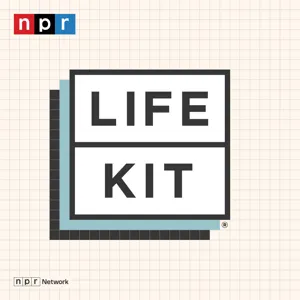Podcast Summary
Combating the Spotted Lanternfly with Unconventional Solutions: Researchers consider importing natural enemies of the Spotted Lanternfly from China to combat its destructive impact on trees and crops in eastern Pennsylvania, emphasizing the importance of addressing invasive species and their potential damage.
The invasive Spotted Lanternfly, originally from China, is causing significant damage in eastern Pennsylvania, with potential costs reaching one million dollars. This insect, which destroys trees and crops, has no natural enemies in the region and is spreading rapidly. To combat this issue, scientists are considering an unconventional solution: importing the bug's natural enemies from China. The Spotted Lanternfly poses a significant threat to the ecosystem and agriculture industry, making it crucial for researchers to find effective solutions. This discovery highlights the importance of understanding and addressing invasive species and their potential impacts.
Apple Card daily cash back percentages vs insect infestations: Apple Card offers different cash back percentages for purchases, but remember potential downsides like insect infestations and their unpleasant consequences
The Apple Card offers different daily cash back percentages depending on the method of purchase. Apple products earn 3%, Apple Pay purchases earn 2%, and all other purchases earn 1%. Meanwhile, in the world of insects, the spotted lanternfly excretes a sugary substance called honeydew, which can lead to a gross situation for those living in infested areas as the honeydew can cause mold growth and leave surfaces feeling wet with bug poop. While the daily cash back rewards from the Apple Card may seem appealing, it's important to remember the potential downsides of other situations, like dealing with insect infestations and their unpleasant consequences.
The Spotted Lanternfly: A New Threat to Vineyards: The Spotted Lanternfly, a non-native species, feeds on sap of plants, causing extensive damage to vineyards. Its lack of natural predators and abundant food sources have led to a severe infestation in Pennsylvania, potentially threatening vineyards' existence.
The Spotted Lanternfly is a non-native insect species that arrived in the United States around five years ago and has since multiplied significantly. Despite not posing a threat to humans, these insects can cause extensive damage to plants, particularly vineyards, by feeding on sap. The lack of natural predators and abundant food sources have allowed the lanternflies to thrive, leading to serious concerns for vineyard owners. For instance, in Pennsylvania, the infestation has become so severe that it could potentially force vineyards out of business. The Lanternfly doesn't fly much but can jump and move in large groups, making control efforts challenging. Their impact on the ecosystem and agriculture is a cause for concern, and ongoing research is being conducted to find effective methods for managing their population.
Protecting Vineyards from Invasive Spotted Lanternflies: Introducing natural enemies of the Spotted Lanternfly, like tiny wasps, could help control its population and mitigate the ecological consequences of its invasion in the US.
The invasive Spotted Lanternfly poses a significant threat to vineyards and ecosystems in the United States, as it depletes resources, preventing plants from producing fruit and disrupting the balance of native species. Vineyard owners can protect themselves with insecticides, but this comes at a cost and does not address the larger ecosystem issue. The ecological consequences of the lanternfly's arrival are complex and unpredictable, potentially impacting forestry generation, native plants, and even birds. However, there may be a solution from the lanternfly's native habitat in China. Scientists propose introducing the lanternfly's natural enemies, tiny wasps, to control the population. These wasps have coevolved with the lanternfly and lay their eggs inside the lanternfly's nymph stage, disrupting its life cycle. While this approach holds promise, it adds another layer of complexity to the issue and underscores the interconnectedness of ecosystems.
Introducing a Chinese wasp to combat Spotted Lanternfly: Scientists are introducing a parasitic wasp from China to combat the invasive Spotted Lanternfly in the US, but its release is not imminent due to quarantine and testing.
Scientists are working to introduce a parasitic wasp from China as a natural enemy to combat the invasive Spotted Lanternfly in the US. However, the release of these wasps is not imminent as they are currently in quarantine undergoing extensive tests to ensure they only attack the targeted species and do not harm native ones. The Spotted Lanternfly is one of many invasive insects that have caused damage to ecosystems in the US, with others including the Gypsy Moth and Brown Marmorated Stink Bug. The long-term impact of the Spotted Lanternfly is yet to be determined, but previous invasive insects have caused significant damage. The process of releasing new natural enemies to combat invasive species is a complex one, involving rigorous testing and approval from federal regulators.
Understanding Global Capital Markets for Retirement: Stay informed about global capital markets to navigate challenges and secure financial future during retirement
Larry Fink, the chairman and CEO of BlackRock, discussed the challenges investors face in areas like retirement and how global capital markets can be part of the solutions on the latest episode of The Bid. If you're interested in market insights from BlackRock's thought leaders, be sure to listen to the episode and subscribe. For those planning for retirement, the global capital markets can play a significant role in achieving financial goals. Fink highlighted the importance of understanding these markets and the challenges they present. By staying informed and making informed decisions, investors can navigate these challenges and work towards a secure financial future. So, whether you're an experienced investor or just starting out, it's essential to keep an eye on global capital markets and the insights they can provide. To stay informed, consider listening to The Bid and subscribing for more insights from BlackRock's thought leaders.






